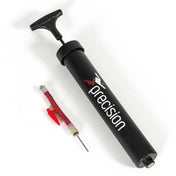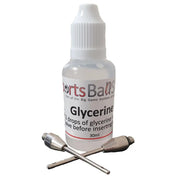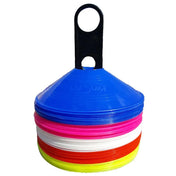It was in 1823 when a young schoolboy William Webb-Ellis a pupil at Rugby School, picked the ball up and ran with it during a game. This was against the rules of the game they were playing but it is described as the moment the game of rugby was invented.
There is such a wide choice of rugby balls on the market now and it can be confusing which ball is the one to go for. Some leagues are very much restricted to a certain brand due to sponsorship deals but generally clubs and schools will have the choice of all the options out there which is much better when they have a smaller budget to stick to. So we hope to give you some information on what size ball you need and some of the options available to you.
Rugby balls are available in 4 different sizes which are designed for varying age groups:
- Size 3: Mini rugby which runs in age groups of under 7's, U8's and U9's
- Size 4: Junior rugby which runs in age groups of under 10's, U11's, U12's, U13's and U14's
- Size 4.5: This is a transitional ball for players moving from the size 4 ball to a size 5 ball enabling them the chance to improve confidence and skills before moving to the larger ball.
- Size 5: Colts and Senior rugby for U15's and above
If you want further advice on What Size Rugby Ball You Should Use or Buy? please see our video below. If you found it useful please hit the subscribe and like button. We also welcome your cmmonets too which can be left in the feed under the video.
Rugby balls are available from many manufacturers and below are merely a selection of the major brands on the market:
- Gilbert
- Lusum
- Rhino
- Mitre
- Webb Ellis
- Kooga
- Canterbury
- Puma
The list is endless as there are many more own label ball brands available to suit every budget.
Rugby balls are available as recreational, training and match balls and the price will generally reflect this difference in the ball specification. You will also see an array of different graphics used by each manufacturer including different colour ways. Quite often they will offer a different coloured ball dependant on size which can be very helpful for coaches if you have several age groups training on the same day, ensuring the balls are not mixed up. Gilbert offers this option with the GTR3000 and GTR4000 and then Lusum have this available on the Munifex rugby ball.
So now to the difference between a training ball and match ball apart from a quite significant price rise! Whilst the differences will vary very much dependant on the ball you purchase the main things will be the bladder used, the valve, the material used for the outer and also the grip. So it's quite a lot to consider when purchasing these balls for your school or club. However unless you are playing at a relatively high level you are unlikely to really need to buy the top of the range match ball like the Gilbert Sirius as the lower level match balls like the Gilbert Revolution X, Gilbert Barbarian and the Lusum Aquilifer Match balls are all exceptional quality and are used by many clubs and schools already.
Manufacturers spend vast sums of money developing and producing balls that they hope one day will grace the world stage. With some of the largest manufacturers spending thousands of pounds on advertising and sponsoring players, clubs, leagues and national teams worldwide. Lusum however, have no marketing budget and produce the same high quality rugby balls for about 25% cheaper and because of this they are able to pass the saving directly to grass roots rugby.
Typical dimensions for rugby balls are as follows:
Mini: length 160mm x circ length 410mm x girth 315mm
Midi: length 225mm x circ length 580mm x girth 525mm
Size 3: length 255mm x circ length 680mm x girth 540mm
Size 4: length 275mm x circ length 720mm x girth 555mm
Size 5: length 285mm x circ length 752mm x girth 585mm
The laws of Rugby Union state that the balls must be oval in shape and made from 4 panels. For a size 5 rugby ball, the length should be between 280mm to 300mm, the length circumference 740mm to 770mm and the width or girth to be 580mm to 620mm. It may be treated to make it water resistant, making it easier to grip in poor weather. The weight of the ball when new should range between 410g to 460g with an optimum ball pressure of 9.5 to 10 PSI.
The laws of Rugby League state the balls shall be an oval air inflated ball. The outer cover to be leather or another material that is approved by the International Board. The dimensions of the ball shall be those approved by the International Board which is as follows:
Length: 280mm to 300mm
Width circumference: 610mm
Weight: 383g to 440g
Rugby League officials suggest the balls are slightly flatter and more pointed than Rugby Union balls.



